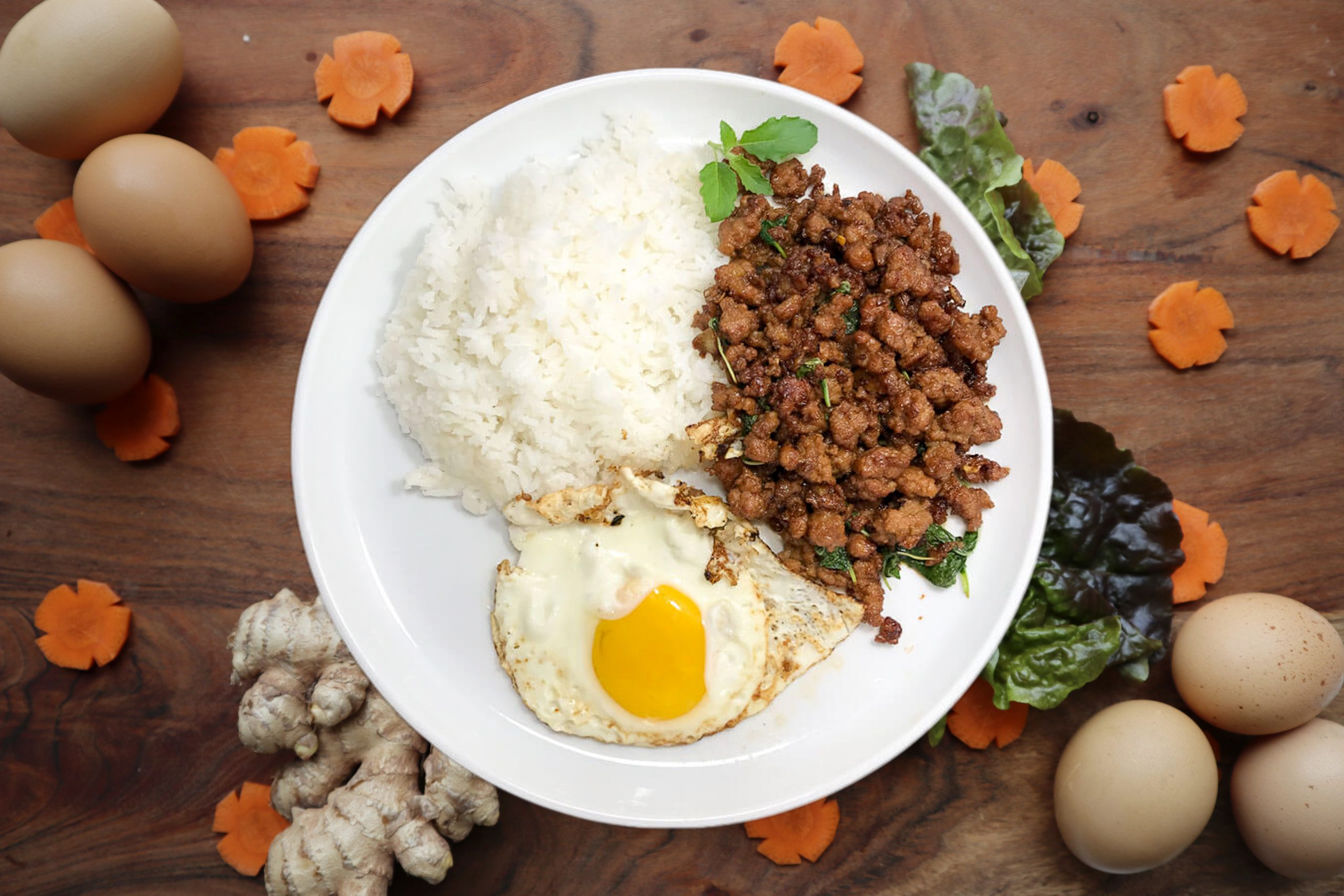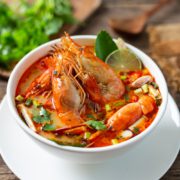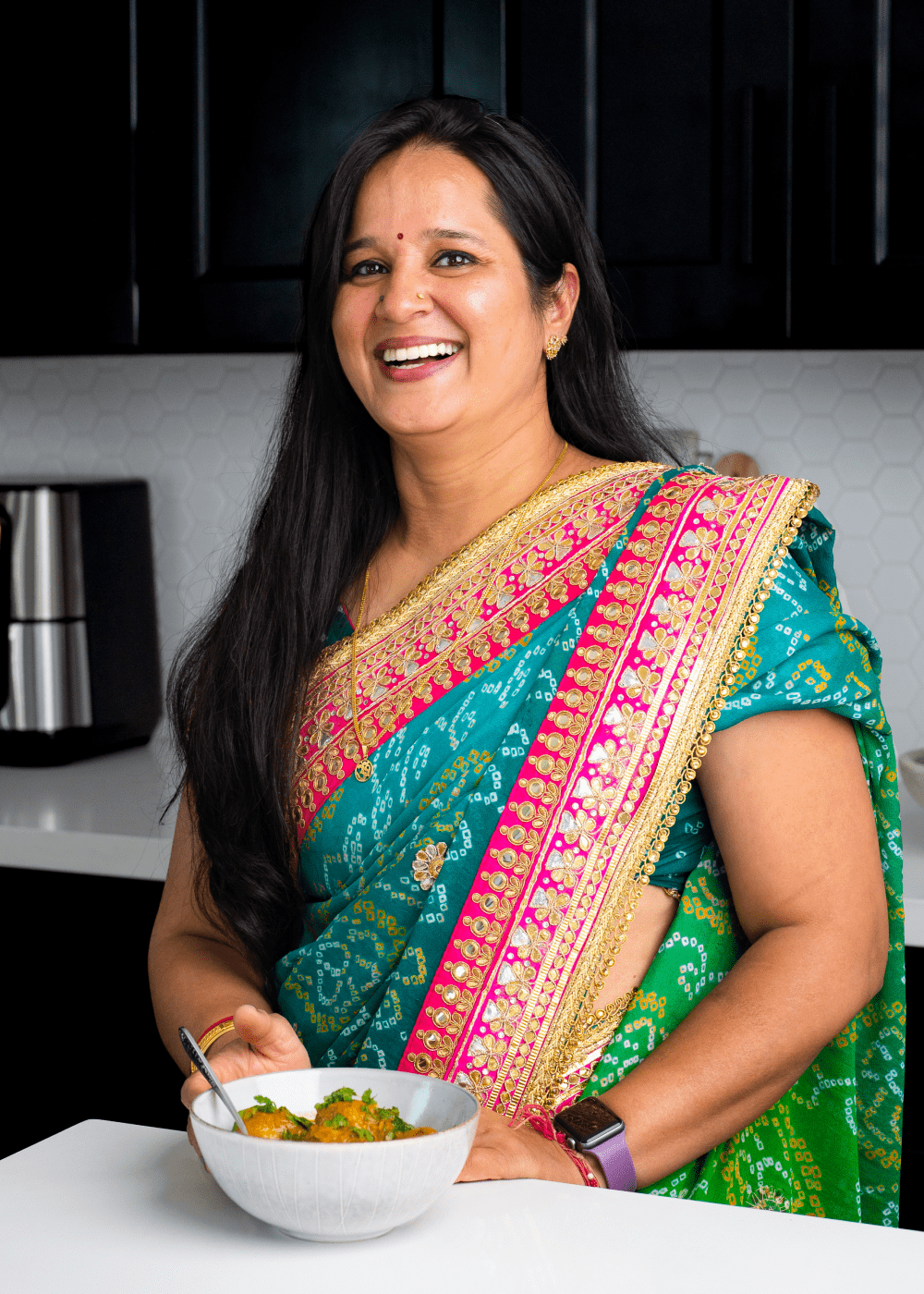A Deep Dive Into 4 Popular Thai Dishes
Pad Kra Pao
Ask any Thai native to name a few of their favorite comfort food dishes, and pad kra pao will surely make the list. Its origins can be traced back to the mid-1900s, when street vendors would serve stir-fried dishes on street carts. It wasn’t long before pad kra pao became a local favorite in Thailand and beyond.
Traditionally, pad kra pao is made by stir-frying minced pork or chicken with garlic, shallots, and Thai bird’s eye chilis. The fragrant and spicy stir-fry is then combined with a mixture of soy sauce, oyster, and fish sauce. Finally, a handful of fresh holy basil is added for aromatics and to balance out the intense flavors. It’s typically served with steamed jasmine rice and a fried egg.
The resulting dish is deeply flavorful, spicy, and well-balanced — aka a perfect representation of Thai cuisine. Today, pad kra pao can be found all over Thailand and in restaurants across the world.
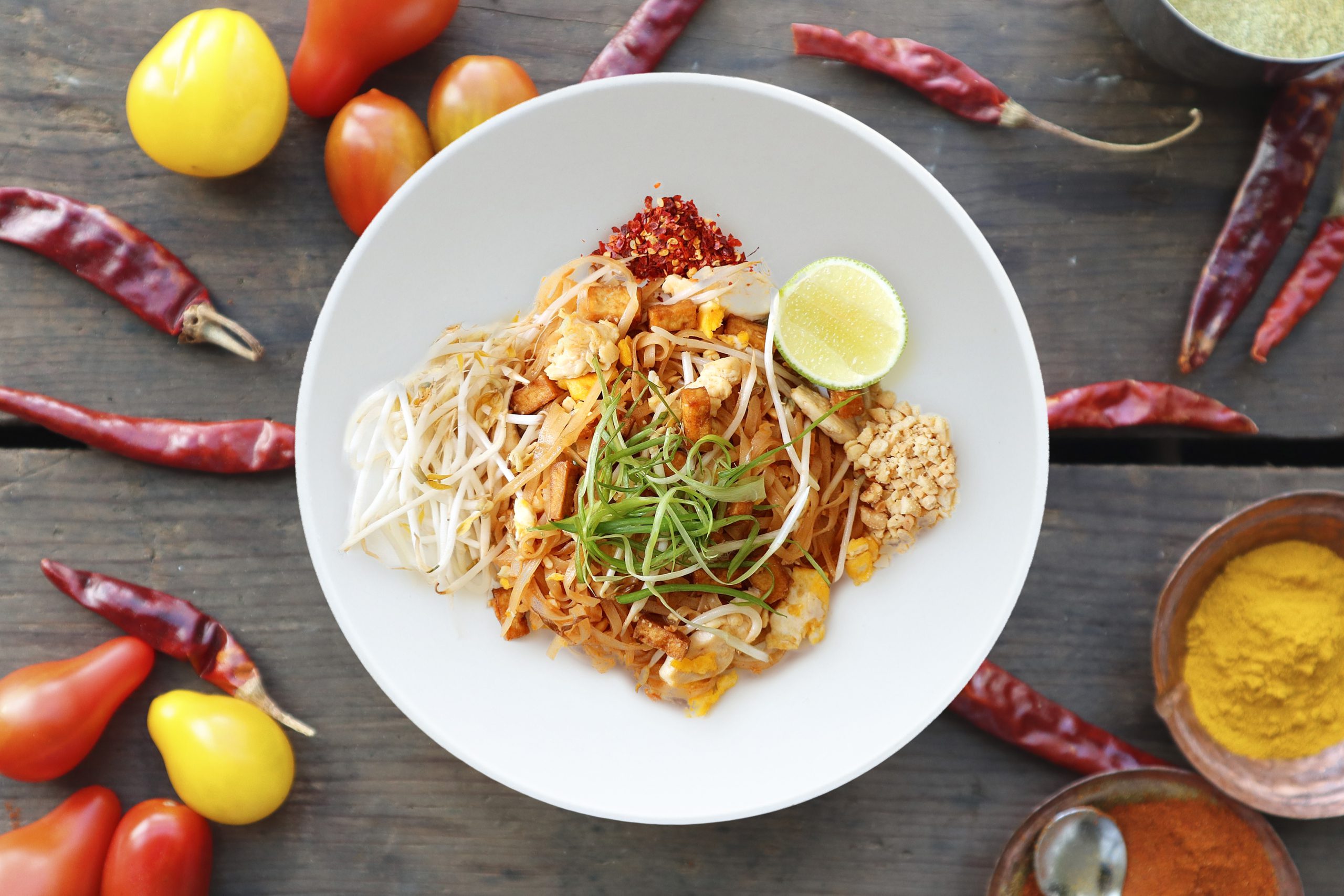
Pad Thai
Pad Thai is the official national dish of Thailand. Served in restaurants, corner cafes, and street vendors all across the country, this influential dish has found its way onto menus around the world. Pad Thai first emerged in the early 20th century, when Thailand suffered a rice shortage due to World II. The Thai government took swift action to encourage local communities to eat more noodles, even sharing recipes with restaurants and giving free food carts to vendors willing to sell Pad Thai in the streets. This powerful movement turned Pad Thai from a small food campaign to one of the most beloved dishes all around the world.
Pad Thai is typically made with rehydrated rice noodles, dried shrimp, firm tofu, and eggs stir-fried with garlic, shallots, and a choice of protein. Its signature sweet and sour flavor profile comes from tamarind juice and palm sugar. After being cooked in the wok, the dish is often finished with fresh bean sprouts, sliced chilis, and chopped peanuts. As with any influential dish, there are many variations of this classic recipe. Today, Pad Thai remains one of the most popular dishes eaten in Thailand and all around the world.
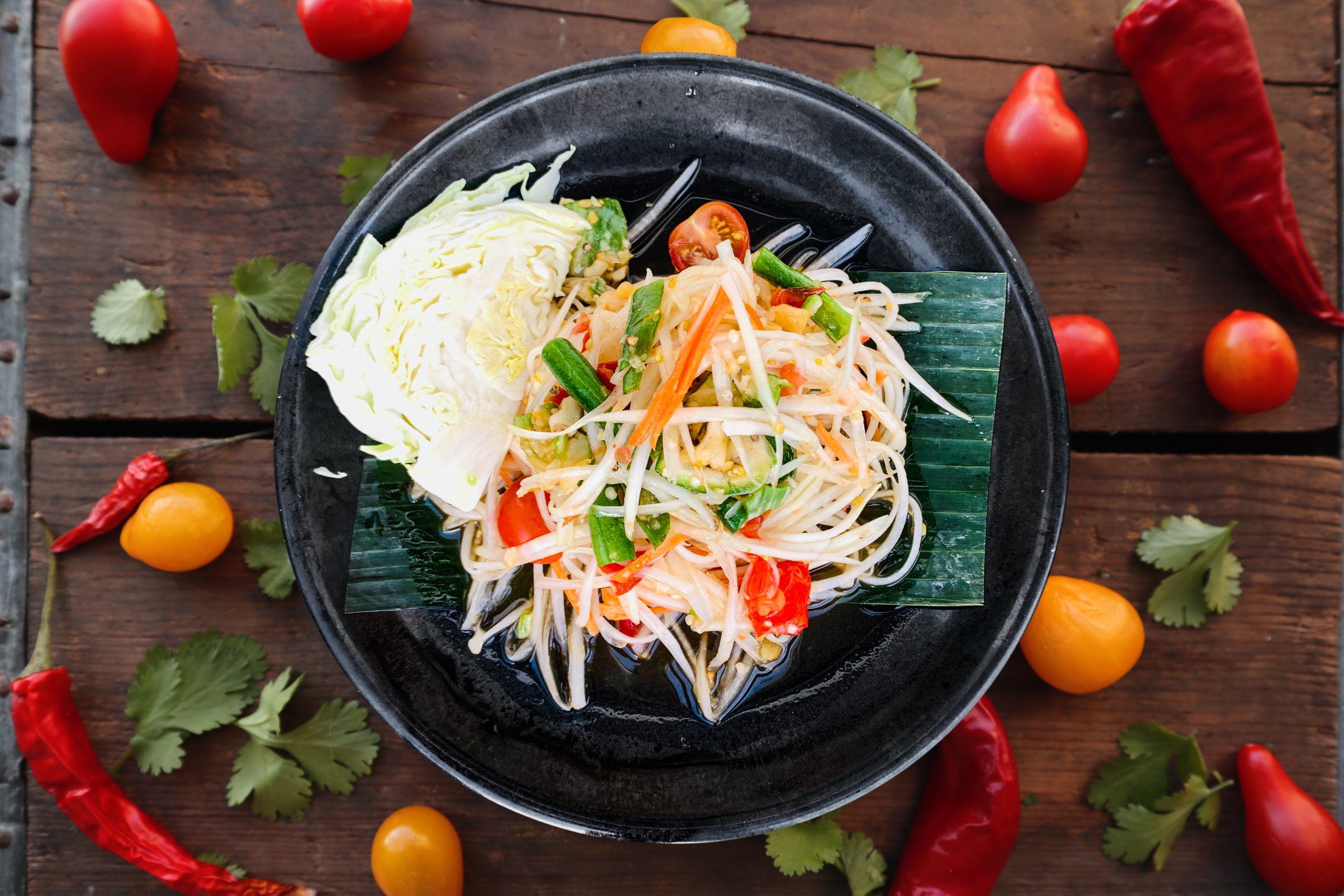
Som Tum
When you think of salad, what’s the first thing that comes to mind? Probably not papaya. But unlike the leafy salads of other cuisines, Thailand’s signature dish of som tum is made of exactly that. It’s a popular dish in Thailand’s northeastern region of Issan, and food historians believe it was influenced by the country of Laos, where several other variations of papaya salad exist. However, the Thai interpretation has made its way into shops and restaurants all over Thailand and beyond.
The dish starts off with unripe green papaya. The fruit is sliced into thin crunchy strips that act as the main base for the salad. The slices are tossed into a mortar and pestle with ingredients like dried shrimp, cherry tomatoes, and long beans. As the ingredients are smashed and mixed, fresh lime juice, chopped peanuts, and fish sauce are added to create a sour, salty, spicy, and bitter flavor. The combination of different textures and deep flavors makes som tum an electrifying dish of unique taste sensations.
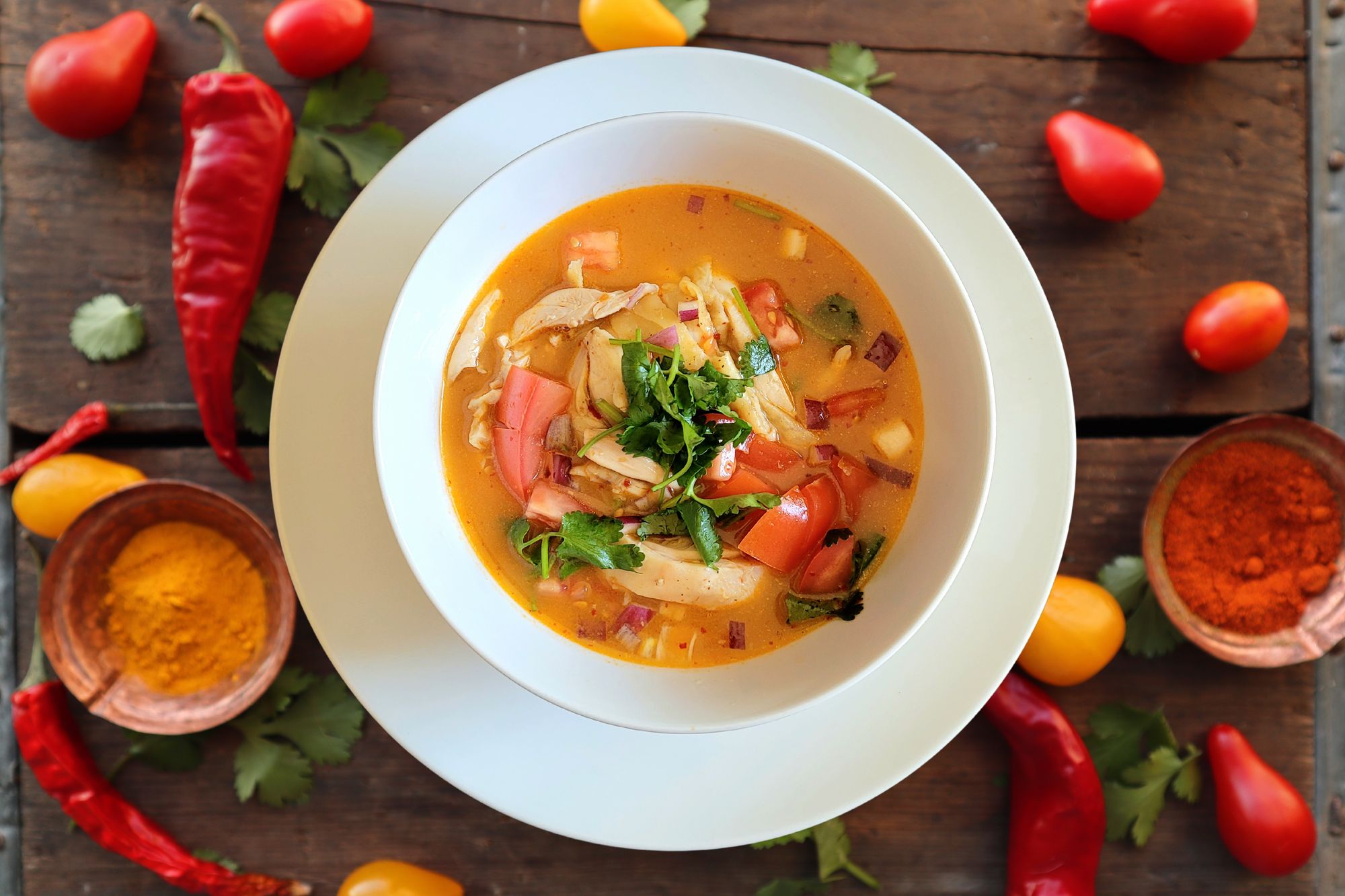
Tom Yum
Tom yum is Thailand’s most famous soup. It was first documented in the 1800s in Central Thailand, where an aromatic seafood-based soup was described as sour and spicy. Over the years, ingredients like fresh vegetables and herbs were added, and today, variations can be found all over Southeast Asia.
Generally served as a starter dish to “prepare the palate,” tom yum is a spicy, sour soup made with fresh aromatics like lemongrass, galangal, and kaffir lime leaves and seasoned with fish sauce, lime juice, and minced Thai chili peppers. Proteins like chicken, shrimp, or seafood are added to the infused broth, and the whole thing is garnished with fresh cilantro before serving. Even as the recipe continues to evolve, its iconic sour and spicy broth remains a hallmark in Thailand’s food culture and beyond.
If your mouth is watering just as much as ours, order some Thai food from our local community of chefs.

